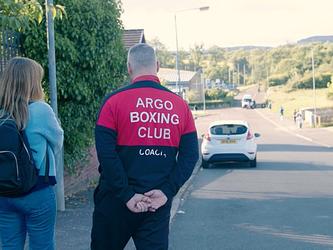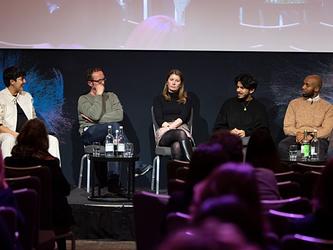The ordinary life: How research helped Reach understand what community means
“‘Community’ has become such a buzzword,” says Hanna Chalmers, founder of The Culture Studio, discussing the trend for brands and marketers to home in on ‘communities’, often with no understanding of either the term or the communities.
Research by The Culture Studio with newsbrand publisher Reach sought to explore what community means in the UK, how communities are formed and what makes them tick. “Post-Covid, everyone was talking about communities and everyone assumed that you would know what they were talking about, but we wanted to take a step back,” says Jenny Shevlin, head of planning and insight at Reach.
A first phase of cultural analysis identified three types of community: fan, local and values. The research then faced a challenge: traditional recruitment fell down when finding communities for participant observation. “Initially, we worked with a very trusted recruiter, but they really struggled to recruit a community – because it is difficult to identify who the leaders of a community are,” says Chalmers. To address this, agency and client regrouped to establish what sorts of groups within the three community types the publisher wanted to speak to.
The researchers identified a mix of fan-based, digital and physical communities, and gaining access took weeks, according to Chalmers. Access meant building a lot of trust with community members over numerous phone calls to reassure potential participants. The seven communities engaged for the ethnography were: a rural Welsh pub that had become a co-operative; a Bradford community organisation; a Liverpool FC football fan community; a Love Island fan community; an online parenting community; a Glasgow-based boxing club; and a Milton Keynes Men’s Shed (a community space for men to connect).
One key finding from the qual, and later backed up in quant results, was that communities are formed around shared experiences – many of them ordinary ones.
Shevlin says: “The ad industry defaults to a shared experience in terms of big moments such as Christmas, Halloween or the World Cup final. What the research uncovered was that shared experiences are just the mundane, normal, everyday moments that are really overlooked – doing the school run is a moment that brings parents together, for example.”
Another finding was the impact of government cuts. “All the communities talked about the fact that there’s been a breakdown in funding to local communities and feeling that ‘the state isn’t here for us’,” says Shevlin.
“There is a default towards [brands thinking about] communities as these joyful places – obviously they are, but a lot of these experiences that bring people together are pretty negative.” For example, the boxing club set up to give kids something to do in the absence of shuttered community centres, or people forming a community because of fly-tipping on their street.
A few media agencies have started to pick up on this in Reach’s presentations to the industry, adds Shevlin. “We tend to want to bury our heads in the sand and think about moments of celebration and joy, and that’s what a brand can get attached to. But women having trouble breastfeeding, or kids taking drugs – these are difficult things. That’s an interesting thought for agencies thinking about how their brands can get involved.”
Did the research find any appetite for brands to step in? Chalmers says: “In the immersions we did and borne out in the quant, given that this gap had emerged because of austerity and Brexit, there is an appreciation that there is a gap to be filled. There is not a negative kneejerk response to the potential of brands getting involved; 68% in the survey agreed that, if brands are going to help, they need to understand communities from the inside out.”
The research has helped Reach to build a “solid foundation” for its market positioning, and establish what it stands for as a sales team, says Shevlin. With 42 million monthly unique visitors and more than 130 titles, the company has started to explore how it can segment its audiences differently and is encouraging media agencies to think about target audiences beyond demographics.
● When asked which features make a group a community, the top responses were ‘togetherness’ ( 55%), ‘belonging’ ( 51%), ‘shared interest or passion’ ( 46%) and trust ( 46%)
● 84% agreed that ‘shared experiences are important in the creation of communities’
● 65% agreed that the pandemic made them appreciate the ‘smaller, more ordinary’ shared experiences in life
(Reach Solutions June 2022 base: UK adults n=2,026 )
This article was first published in Impact magazine, April 2024 issue.

We hope you enjoyed this article.
Research Live is published by MRS.
The Market Research Society (MRS) exists to promote and protect the research sector, showcasing how research delivers impact for businesses and government.
Members of MRS enjoy many benefits including tailoured policy guidance, discounts on training and conferences, and access to member-only content.
For example, there's an archive of winning case studies from over a decade of MRS Awards.
Find out more about the benefits of joining MRS here.














0 Comments